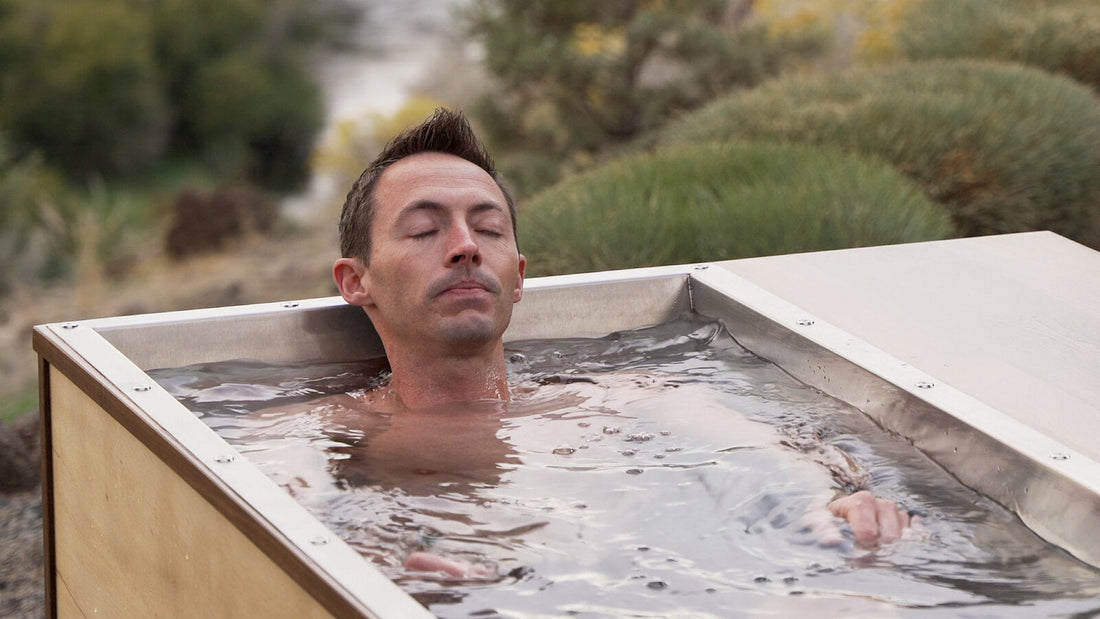
Cold-Water Immersion: How It Affects Energy, Appetite and Eating Habits
Share
Cold-water immersion (CWI) has become popular for recovery, mood improvement and overall wellness. Many athletes and wellness enthusiasts swear by it. But new research shows that while it may have benefits, it could also make you eat more afterwards. This has important implications for anyone trying to manage their weight.
What the Study Looked At
Researchers wanted to find out how water temperature affects how much energy the body uses, and how much people eat after being in the water. They compared three conditions:
-
Cold water immersion at 16°C
-
Thermoneutral water immersion at 35°C
-
Sitting in thermoneutral air at 26°C
Fifteen healthy, active adults took part. Each person experienced all three conditions on separate days. After 30 minutes in the assigned condition, participants were offered a pasta meal and told to eat until they felt comfortably full. The researchers also measured their energy use, core temperature, and feelings of hunger throughout the process.
Key Findings
The results were clear: after sitting in cold water for 30 minutes, people ate much more than in the other two conditions. On average:
-
Cold water: 2783 kJ eaten
-
Warm water: 1817 kJ eaten
-
Air: 1894 kJ eaten
This means participants ate about 32–34% more after being in cold water compared to warm water or air. Energy expenditure was also higher in cold water (224 kJ) compared to the other two (around 130–135 kJ). Interestingly, feelings of hunger on self-reported scales did not differ much between conditions, even though people ate more after cold water.
Why Does Cold Water Make You Eat More?
When the body is exposed to cold, it works harder to keep warm. This process, called thermogenesis, uses extra energy. Some of it comes from shivering, and some from other heat-producing processes in the body. After cold exposure, the body may try to replace that energy by increasing food intake.
Another factor is the “after-drop” in core body temperature. The study found that 15 minutes after leaving the cold water, participants’ core temperature had dropped by about 0.5°C, while it stayed almost the same in the other conditions. Eating can help warm the body up through the thermic effect of food, so this drop might trigger extra eating.
What This Means for Weight Management
If you use cold-water immersion regularly and you are trying to manage or lose weight, it’s worth being aware of this effect. The extra calories eaten after CWI could easily cancel out or even outweigh the extra calories burned during the cold exposure. In this study, even after accounting for the extra energy used in cold water, people still ended up with a higher “net” calorie intake.
Practical Tips
If you enjoy cold-water immersion for its other benefits, you don’t necessarily have to stop. But here are some ways to manage the possible increase in appetite:
- Plan your post-CWI meal: Have a balanced, portion-controlled meal ready instead of eating freely from a large spread.
- Focus on high-protein, high-fiber foods: These can help you feel full without adding too many extra calories.
- Stay mindful: Pay attention to whether you are truly hungry or just feeling the urge to eat after being cold.
- Warm up gradually: Wearing warm clothes or sipping a hot drink after immersion might help reduce the drop in core temperature and lower the drive to eat.
Final Thoughts
Cold-water immersion can be a refreshing and invigorating experience with potential health benefits. But it also has the hidden effect of increasing food intake in the short term. If weight control is a goal, being aware of this and planning your meals accordingly can help you enjoy the benefits without unwanted side effects.
